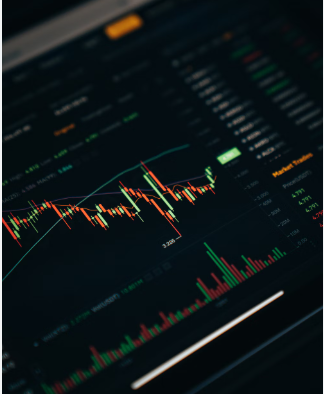CFD trading is an exciting and ever-growing market. More and more investors are starting to explore its vast potential as it provides a means of taking a position in markets across the world without owning the underlying asset. This allows for greater flexibility and liquidity. Before you dive in and start designing your trading strategy, it’s essential to understand the fundamentals of CFD trading. In this blog post, we will cover the basics of CFD Trading, what it is, how it works and some of the key advantages and risks associated with this type of trading.
What is CFD Trading?
CFD Trading (Contracts for Difference) is an agreement between two parties, a buyer and a seller, to exchange the difference between the opening and closing price of a trade on the underlying asset. This underlying asset can be a range of markets, from stocks and shares to commodities and forex. The CFD trader is not the owner of the underlying asset but instead takes a position on whether prices will rise or fall. In essence, CFD trading is a way to speculate on price movements without owning the asset.
How Does CFD Trading Work?
To start trading Cfds, you must choose an asset to trade, decide whether you think the price will go up or down, and enter the trade. If successful, you would profit from the difference between the opening price and the closing price of the trade. If the market falls, the trader would incur a loss. CFD trading offers leverage, which allows traders to take a larger position than they otherwise would be able to afford. This provides the potential for more significant profits but also increases the risks involved in CFD trading.
Advantages of CFD Trading
One of the main advantages of CFD trading is flexibility. Cfds provide the opportunity to trade in a range of products, including stocks, shares, and forex, giving traders the ability to diversify their portfolio easily. Additionally, Cfds offer flexibility in the form of margin trading, which allows traders to hold a position worth more than the funds available in their account.
CFD brokers typically offer tight bid/ask spreads and low commissions which results in lower transaction costs. Also, CFD traders can profit from falling prices as easily as rising ones. Traders can open a short position when they believe a particular market is due to fall, which is usually not available in other trading options such as stocks.
Risks of CFD Trading
CFD trading carries risks along with advantages. As mentioned earlier, leverage provides the opportunity for significant profits with a relatively small investment, but at the same time, it also increases the risks. It is vital to understand that CFD trading involves substantial risk and is not suitable for everyone. Additionally, Cfds are generally subject to varying margin rates and may operate in a volatile market, leading to potential losses that exceed the value of the trader’s account.
Conclusion:
cfd how it works trading is an exciting market that provides the opportunity for traders to speculate on price movements in a range of markets. Despite the advantages of CFD Trading, including flexibility and margins, it also has risks and is not suitable for everyone. Before you start trading Cfds, it is crucial to understand the basics and develop your trading strategy. It is advisable to invest the time in conducting research, exploring different markets, analysing market trends and identifying your risk tolerance, and then consult with an expert before making an investment. With the right education, experience, and tools, CFD trading can be an exciting and profitable addition to your investment portfolio.
